- 25 Mart 2025 - -YENİ- İYİ FİNAL/YAŞLILIK İÇİN
- 17 Mart 2025 - MİLLİ BİRLİK VE BERABERLİĞİMİZİN 5 KİLOMETRE TAŞI
- 10 Mart 2025 - NEYİ ÇEKİYORSUNUZ? (Rezonans-Çekim Yasası)
- 03 Mart 2025 - ŞEYTANI NE DAVET EDER?
- 24 Şubat 2025 - ŞANLI DEVRİMİ DUYDUNUZ MU?
- 17 Şubat 2025 - -YENİ- AİLE YILINDA KAMU-STK DENGESİ (AİLE VAKFI ÖNERİSİ)
- 10 Şubat 2025 - MİKROFONLA EZAN OKUNURKEN SAĞA/SOLA DÖNÜLÜR MÜ?
- 04 Şubat 2025 - YILDIZ MI, AY MI, KARA DELİK MİSİNİZ?
- 27 Ocak 2025 - FELAKETLERİN İLK ADIMI SUÇLUNUN MASA İLAN EDİLMESİYDİ
- 20 Ocak 2025 - ÜZÜMÜN SAPI, ARMUDUN ÇÖPÜ, MUZUN KABUĞU YENİR Mİ?
- 13 Ocak 2025 - BİZİ KİM DAHA İYİ YIKAR? SU MU, ATEŞ Mİ?
- 07 Ocak 2025 - KAN BAĞIŞI MI? HACAMAT MI?
- 30 Aralık 2024 - KAVGALARIN ASIL SEBEBİ NEDİR?
- 25 Aralık 2024 - VER KORKUYU DEĞİL; VER COŞKUYU
- 17 Aralık 2024 - İMAN-HİKMET-GAYRET-TEVEKKÜL
- 09 Aralık 2024 - ZITLIKLARIN ORTASINDA VASATI BULMAK
- 02 Aralık 2024 - MECELLE PUSULASI (ALTIN FORMÜL İÇERİR)
- 25 Kasım 2024 - ZAHMETTEN KAÇARAK RAHMETE ULAŞILABİLİR Mİ?
- 18 Kasım 2024 - HAK YOK VAZİFE VAR; FERT YOK CEMİYET VAR.
- 11 Kasım 2024 - POLİMAT-ENTELEKTÜEL
- 04 Kasım 2024 - ÖNCE DONANIM (HARDWARE) SONRA YAZILIM (SOFTWARE)
- 28 Ekim 2024 - İBRETLİK BİR ÖLÜMDEN DERS ÇIKARABİLMEK (FETÖ GERÇEĞİ)
- 21 Ekim 2024 - YAŞLANMA SÜREÇ ODAKLI BİR GELİŞMEDİR VE ANNE KARNINDAN BAŞLAR.
- 15 Ekim 2024 - ÜÇÜ BİRLEYEBİLİR MİYİZ? (Türkçülük/İslamcılık/Batıcılık)
- 07 Ekim 2024 - BEYİN-BEYİNCİK-VİCDAN=YASAMA-YÜRÜTME-YARGI
- 30 Eylül 2024 - GEÇMEK Mİ, KALMAK MI?
- 23 Eylül 2024 - METAFOR (MESNEVİ/KABAK METAFORU)
- 10 Eylül 2024 - İDDİALAR VE HIRSLARIMIZIN KUŞATTIĞI HAYATLARIMIZ
- 03 Eylül 2024 - KİTAP VE SİLAH DENGESİ
- 21 Ağustos 2024 - GÖZ BEBEĞİMİZ OLAN DOSTLARIMIZ (!)
- 12 Ağustos 2024 - ÖNCELİKLİ KAYGILARIMIZ
- 06 Ağustos 2024 - SEVGİ-ACI-HZ. İNSAN
- 29 Temmuz 2024 - İNİŞ-ÇIKIŞ-KONFOR
- 22 Temmuz 2024 - GENÇLİĞİN GÜNDEMİNDEKİ KONULARA DAİR: SORU/CEVAP
- 15 Temmuz 2024 - KAPAĞINIZ/DUDAĞINIZ KAPALI MI?
- 09 Temmuz 2024 - SÜLEYMANLAR AYAKTA ÖLÜR.
- 05 Temmuz 2024 - EVLİLİK YAŞI İÇİN 5 N 1 K (HZ. AİŞE ÖRNEĞİ ÜZERİNDEN)
- 25 Haziran 2024 - İNSAN HAYATA NEREDEN BAŞLAMALI ?
- 12 Haziran 2024 - İNSAN NEDEN ALZHEİMER VE DEMANS OLUR?
- 05 Haziran 2024 - SEVİNİNCE TOPRAĞA, ÜZÜLÜNCE GÖKYÜZÜNE BAK!
- 29 Mayıs 2024 - BİR HİKÂYENİZ VAR MI?
- 23 Mayıs 2024 - EN BÜYÜK SÜRPRİZ BİZİ BEKLİYOR OLABİLİR Mİ?
- 13 Mayıs 2024 - MESLEK LİSESİ Mİ, FEN/ANADOLU LİSESİ Mİ? (MÜFREDAT İÇİN)
- 06 Mayıs 2024 - ANAOKULU MU, ÜNİVERSİTE Mİ? (MÜFREDAT İÇİN)
- 29 Nisan 2024 - HARDAL TANESİ
- 22 Nisan 2024 - ÖZELEŞTİRİ Mİ / SAVUNMA MI?
- 08 Nisan 2024 - SİYASETTE ADALET Mİ FAYDA MI?
- 03 Nisan 2024 - YAPAMADIĞIMIZ ŞEYİ ALLAHTAN İSTEMEK!
- 26 Mart 2024 - BUEN VİVİR
- 25 Mart 2024 - BAŞROL DE Mİ OYNUYORSUNUZ, YOKSA FİGÜRAN MISINIZ?
- 13 Mart 2024 - NEHİR AKMALI!
- 12 Mart 2024 - NEHİR AKMALI!
- 05 Mart 2024 - SAYGI DUYMAM GEREKEN BU(!) MU?
- 29 Şubat 2024 - DÜNYA VE AHİRETTE UYUYABİLMEK VE UYANABİLMEK
- 22 Şubat 2024 - OMURGA
- 12 Şubat 2024 - AİLE NEDEN İLK DÜŞMANDIR?
- 09 Şubat 2024 - ANNE/BABA/ÖĞRETMEN ACI BİR TEBESSÜM
- 29 Ocak 2024 - DERDİNİN DEVASI SENSİN
- 23 Ocak 2024 - EŞYANIN RUHU
- 15 Ocak 2024 - ALÇAK GÖNÜLLÜ
- 09 Ocak 2024 - NEDEN UZAKLARI YAKIN, YAKINLARI UZAK ETTİK?
- 01 Ocak 2024 - EN BÜYÜK FESAT NEDİR ?
- 25 Aralık 2023 - İKİNDİ NAMAZI VE BENÎ KURAYZA YAHUDİLERİ
- 18 Aralık 2023 - Kütük Çok Sahibi Yok!
- 12 Aralık 2023 - Fix/Takıntı
- 04 Aralık 2023 - Siyaset ve Tefekkür
- 27 Kasım 2023 - Haddini bil, mutlu ol!
- 20 Kasım 2023 - Korona Döneminin Dijital Çocukları
- 14 Kasım 2023 - Sessizliğin Gücü (Meryem, 19/10)
- 07 Kasım 2023 - Çocuğa Sevgi, Gence Güven ve Yaşlıya Saygı
- 16 Ekim 2023 - Pozitiflik, Saf Pozitiflik midir?
- 12 Ekim 2023 - Gülümseme ve Huzur
- 02 Ekim 2023 - Kabz ve Bast
- 20 Eylül 2023 - Bağınız her daim açık mı?
- 13 Eylül 2023 - Nişanlınız Nasıl Güzel Olur?
- 30 Ağustos 2023 - Helalleşme/Sıfırlama(!?) Mümkün mü?
- 22 Ağustos 2023 - Yalanın Negatif ve Pozitifi
- 17 Ağustos 2023 - Ne yığdırın, ne de bağırtın.
- 07 Ağustos 2023 - Kadife Yumruk (Gerçeğin Gücü)
- 03 Ağustos 2023 - Artırılmış Sanal Hayatın Kurbanları
- 23 Temmuz 2023 - Peygamber Kıssaları ve Çocuk Eğitimi
- 18 Temmuz 2023 - Peygamber Kıssaları ve Çocuk Eğitimi
- 03 Temmuz 2023 - Neredesin Hızır?
- 28 Haziran 2023 - Nakıs/Noksanlık/İmtihan
- 14 Haziran 2023 - 5 95den Büyüktür. (Çocuk Eğitimi)
- 06 Haziran 2023 - Aile Mahremiyeti ve Nükleer Enerji
- 29 Mayıs 2023 - Talip Olduklarımıza Dikkat!
- 23 Mayıs 2023 - Liderlere Hüsn-i Hâtime İçin 5 Tavsiye
- 15 Mayıs 2023 - Seferoğulları, Tellioğulları ve Yeşil Vadi
- 08 Mayıs 2023 - Ubasute
- 01 Mayıs 2023 - İşiniz Zor mu?
- 10 Nisan 2023 - Niyet-Düşünce-Söylem-Eylem-Amel-Ahlak
- 03 Nisan 2023 - Her Zaman, Her Şeye Rağmen Kazanmak mı?
- 27 Mart 2023 - Faraziye Hayatlar, Şimdi ve Burası
- 20 Mart 2023 - Kifayetsiz Muhterisler, Dış Güçler ve Türkiye Yüzyılı
- 13 Mart 2023 - Sofradaki Çatal (Vasat-Orta Yol)
- 06 Mart 2023 - Hayat; geriye doğru , ileriye doğru
- 20 Şubat 2023 - Sabır; Boyun Eğmek Değil Mücadele Etmektir.
- 13 Şubat 2023 - Deprem - Kenetlenme - Kader - Tedbir
- 08 Şubat 2023 - Köy/Şehir Gerilimi ve Başıboş Köpekler Sorunu
- 31 Ocak 2023 - Akupunktur-İğnelenme-Eleştiri
- 23 Ocak 2023 - Üç Farklı Rüzgârın Anaforundaki Ülkem
- 09 Ocak 2023 - Mevlana, Konevi ve Urmeviyi Anlamak İçin
- 03 Ocak 2023 - Kadın ve Erkek Eş Değerdir.
- 26 Aralık 2022 - Sema bize ne anlatır?
- 20 Aralık 2022 - Kötülük Genini Çıkarabilir miyiz?
- 12 Aralık 2022 - Kimin Uydusuyuz?
- 05 Aralık 2022 - Sağlıklı Birey-Mutlu Aile-Huzurlu Toplum
- 02 Aralık 2022 - Hak ve Hakikat
- 21 Kasım 2022 - Acı Bir Tebessümle Kayan Yıldızlar
- 15 Kasım 2022 - Aile ve Gençlik Çalıştayı
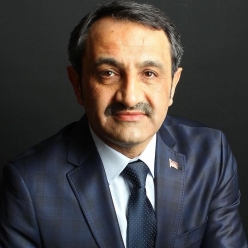
DR. CEMİL PASLI
Mehmetleri Fatih Yapmak İçin
Mehmet’leri “Fatih” Yapmak İçin…
Gençleri genelde motive etmeye çalışırken, bazen de eleştirirken çok kullandığımız bir beyit var:
“Yürü; hâlâ ne diye oyunda, oynaştasın?
Fâtih'in İstanbul'u fethettiği yaştasın!”
(Fetih Marşı, Arif Nihat Asya)
Madem hem motive hem de eleştiri için kullanılıyor, o halde Sultan Mehmet’i gençlerimize en iyi şekliyle tanıtmak gerekiyor.
Çağ açıp, çağ kapatan Sultan Mehmet’in en önemli özelliği iyi eğitim almasıydı.
Ve bu eğitimin merkezinde “öğrenmeyi öğreten” hocalara ve kitaplara sahip olması duruyordu.
Allah tarafından Hz. Âdem (a.s.)’e esmanın (eşyanın mahiyeti) öğretilmesi (Bakara, 2/31) ile varlık a(ontoloji), bilgi (epistemoloji) üzerine oturdu.
Böylelikle bilginin de iki temel kanalı oluştu: Vahiy ve Akıl.
Akıl/Nakil dengesi kadim tartışma konularımızdandır.
İslam düşünce tarihinde ilk akılcılar diyebileceğiz Mutezile’nin ortaya koyduğu olumsuz performans kaynaklı, akla karşı oluşan direnç günümüzde de devam etmektedir.
Mutezile mensuplarının en büyük hatalarını iletişim konusunda yapmışlardı. Fikir ve düşüncelerini siyasi desteği arkalarına alarak “dikte” etmeleri ve yaşattıkları “mihne dönemi” onların en büyük hatası olarak tarihe geçerken; mihneye karşı yapılan karşı darbe en büyük zararı akıl/nakil dengesine vermiş ve olumsuz etkisi günümüze ulaşmıştır.
Mutezile mensuplarının yanlış iletişimi aklın prematüre doğmasına yol açmış; ortaya çıkan sonuçlar bugünü etkilediği gibi yarını da etkilemeye devam edecek gibi görünüyor.
Akıl ve Vahiy bir kuşun iki kanadı gibi denge ve uyum içerinde birlikte hareket etmesi geren bilgi kanalları.
Biri biri-siz olmaz, biri olmadığında diğeri de eksik olur.
Bediüzzaman Said Nursi bu mecburi ilişkiyi şöyle dile getirir:
"Vicdanın ziyası, ulûm-u diniyedir. Aklın nuru, fünun-u medeniyedir. İkisinin imtizacıyla hakikat tecellî eder. O iki cenah ile talebenin himmeti pervaz eder. İftirak ettikleri vakit, birincisinde taassup, ikincisinde hile, şüphe tevellüd eder." (Münâzarat)
Kuşun ilk hangi kanadının çırpması konusunda önceliği ise akla veriyordu Bediüzzaman:
"Takarrur etmiş usuldendir: Akıl ve nakil teâruz ettikleri vakitte, akıl asıl itibar ve nakil tevil olunur. Fakat o akıl, akıl olsa gerektir." (Muhakemat, Birinci Makale, Birinci Mukaddeme)
Akıl (beyin) ve kalp (vahiy) el ele verdiğinde insan denen makine gerçek anlamda çalışıyordu.
Tarihte kalıcı iş yapanlar; ister âlim, ister devlet adamı olsun hepsinin temel özelliği iki kanatla uçanlardır.
Vahiy dışarıdan gelen akıl, akıl içeriden gelen vahiy diye düşüneler geriye bir şeyler bırakıyorlardı.
Yazımızın başlığı olan cönk (el çantası)ün sahibi olan Fatih Sultan Mehmet akıl-nakil dengesi sağlamaya çalıştığı dört kitabı sürekli yanında taşımıştı.
Bu kitaplar orijinal halleriyle Nur-u Osmaniyye Kütüphanesinde bulunuyor:
İbn-i Sina-el- İşarat = Nazar yönteminin kurucu ve zirve metnidir.
Gazzali-Tehafüt-ü Felasife = Nazar yöntemine güçlü Eş'ari eleştiri metnidir.
Sühreverdi-Hikmet-i İşrak = Müşahede ve nazari geleneğin birleştirilmesini öneren İşrakiyye geleneğinin anlatılır.
Konevi-Miftah'ul Gayb = Müşahede geleneğini merkezi alarak nazari geleneği yeniden yorumlayan ekberi geleneğin zirve metnidir.
Aklı ve nakli bilgiyi etkin kullanan Fatih Sultan Mehmet, idareye geçmeden önce doğunun ve batının bütün tecrübesini okudu.
Arapça, Farsça, İbranice, İtalyanca, Yunanca ve Latince dillerini o dile ait eserlerden Türkçeye tercüme yapacak kadar iyi biliyordu. O zaman ki dünyada geçerli diller bunlardı.
İstanbul'u fethettiğinde Bizans kralı olan Konstantin'in oğlu yoktu. Abisi Teodor'un üç oğlu vardı. Fatih bunlardan Müslüman olan ikisine Has Murat Paşa ve Mesih Paşa'ya devlette önemli görevler verdi.
Bizans tecrübesini yanında tutmayı başarmış, aleyhinde kullanmayı engellemiş bir aktif aklın yanında devlet idaresindeki 30 yıl boyunca 25 sefere çıkacak kadar hareketli bir insandı.
Bu 25 seferde 2 imparatorluk, 4 krallık, 11 prensliği devletine katmıştır.
Aklı ve kalbi birlikte kullanıp hayatı boyunca güzel işler yapanlara yönelik misaller çoğaltılabilir.
Eğitim sistemi; gençlerimizin “el çantası”na bu çeşit “öğrenmeyi öğreten” kitaplar koymuyorsa; onlara Arif Nihat Asya’nın “Fetih Marşı” nı okumak hamasetten öteye geçmez.
To Make Mehmets “Conquerors”…
There is a couplet that we use a lot when we try to motivate young people and sometimes criticize them:
"Walk; why are you still playing the game?
You are at the age when Fatih conquered Istanbul!”
(Anthem of Conquest, Arif Nihat Asya)
Since it is used for both motivation and criticism, then it is necessary to introduce Sultan Mehmet to our youth in the best way possible.
The most important feature of Sultan Mehmet, who opened and closed the age, was that he received a good education.
And at the center of this education was having teachers and books that "teach learning".
by Allah, Being (ontology) was based on knowledge (epistemology) with the teaching of esma (the nature of things) to Adam (a.s.) (Baqara, 2/31).
Thus, two main channels of knowledge were formed: Revelation and Reason.
Mind/Transfer balance is one of our ancient discussion topics.
The resistance to reason due to the negative performance of Mutezile, who can be called the first rationalists in the history of Islamic thought, continues today.
They made the biggest mistakes of the members of the Mutezile in communication. Their biggest mistake went down in history as their "dictation" of their ideas and thoughts with political support behind them and the "mihne period" they lived through; The counter-coup against the mihne caused the greatest damage to the mental/transplantation balance and its negative effect has reached today.
Miscommunication of the members of the Mutazila caused the mind to be born prematurely; it seems that the results will continue to affect tomorrow as well as today.
Reason and Revelation are channels of information that must move together in balance and harmony like the two wings of a bird.
One is not one-you, and when one is absent, the other is incomplete.
Bediuzzaman Said Nursi expresses this obligatory relationship as follows:
"The light of conscience is religion. The light of the mind is the spirit of civilization. Truth manifests itself with the cooperation of both sides. With those two sides, the patronage of the student relents. When they slander, bigotry in the first, cheating and doubt in the second." (Debate)
Bediuzzaman gave priority to which wing of the bird flapped first:
"It is from the method that has made a mistake: When the mind and the narration conflict, the mind is interpreted as the main respect and the transmission. But that mind must be the mind." (Reasoning, First Article, First Preamble)
When the mind (brain) and heart (revelation) went hand in hand, the machine called the human actually worked.
Those who do permanent business in history; Whether they are scholars or statesmen, the main feature of all of them is that they fly with two wings.
Those who thought that the revelation was the mind from the outside, the mind was the revelation from the inside, were leaving something behind.
Fatih Sultan Mehmet, the owner of the cönk (handbag), which is the title of our article, always carried four books that he tried to balance the mind-transplantation with him.
These books are in their original form in the Nur-u Osmaniyye Library:
Ibn-i Sina-el-Isarat = It is the founding and summit text of the Evil Eye method.
Gazzali-Tehafüt-ü Felasife = It is a strong Ash'ari criticism text to the evil eye method.
Sühreverdi-Hikmet-i İşrak = It describes the tradition of İşrakiyye, which proposes to combine observation and theoretical tradition.
Konevi-Miftah'ul Gayb = It is the peak text of the akbari tradition, which reinterprets the theoretical tradition by taking the tradition of observation as the center.
Fatih Sultan Mehmet, who used his mind and knowledge effectively, read all the experiences of the east and the west before going to the administration.
He knew Arabic, Persian, Hebrew, Italian, Greek and Latin languages well enough to translate works of that language into Turkish. These were the languages that were valid in the world at that time.
Constantine, who was the Byzantine king when he conquered Istanbul, had no sons. His older brother Theodore had three sons. Fatih gave important duties in the state to two of them, Has Murat Pasha and Messiah Pasha.
Besides an active mind that managed to keep the Byzantine experience with him and prevented it from being used against him, he was an active person enough to go on 25 expeditions during his 30 years in state administration.
In these 25 expeditions, he added 2 empires, 4 kingdoms and 11 principalities to his state.
Examples can be multiplied for those who use their mind and heart together and do good deeds throughout their lives.
Education system; if our young people don't put these kinds of " teaching to learn" books in their "handbag"; Reading Arif Nihat Asya's "The March of Conquest" to them is nothing more than heroism.


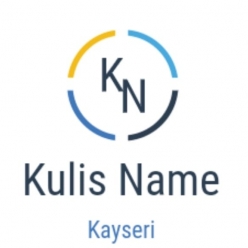


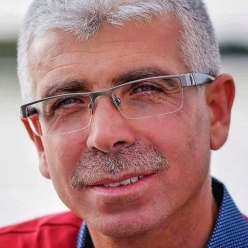

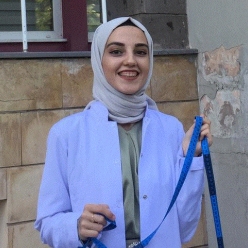
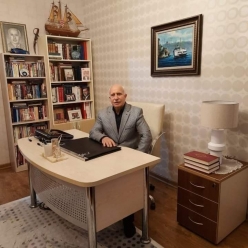




Henüz Yorum yok